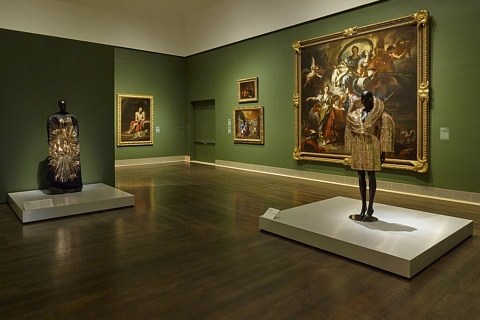Director Julie Taymor was initially repulsed by Frida Kahlo’s gory artwork. But the producer and eventual lead actress of “Frida,” Salma Hayek, sparked Taymor’s appreciation and reverence for the artist after she approached her to navigate this unique 2002 film.
But the biopic proved to be a more arduous challenge than it may seem.
Frida Kahlo’s life-long struggles began with a bus crash. Although she regained her ability to walk, the injuries hindered her physical health until her demise at the early age of 47. Taymor choreographs this pivotal crash sequence in merciless strokes of trauma and mysticism, with gold dust sprinkling the air as Frida collapses in the debris.
The mingling of mysticism with reality indicates how much of Frida’s artistic inspiration stemmed from her pain.
In the aftermath, she jokes to her boyfriend, “I told the doctor that the handrail (that impaled her) had taken my virginity.”
Frida’s snarky humor gives herself and her friends something to smile about, even if it’s only slight alleviation of unbearable agony. Hayek spices Frida the right dose of wit and underlying melancholy.
There are brushstrokes of Taymor’s whimsical – often grotesque – trademarks, which paraded in her previous stage work and underrated Shakespeare revisionist film “Titus.”
Similar to “Titus,” the scenes leap from the restraints of realism. Sometimes Taymor crafts a fusion of the painting and real-life scenes to illustrate how Frida chronicled reality in the abstract.
Taymor is concerned with how Frida’s pieces were abstract diary entries of her life, rather than rigid, innovative genius. But even though Frida considered her art too personal for the surrealism label, her life was almost as bizarre as her work.
The film is paced like a checklist of real-life events – a hodge-podge of incidents and encounters, including her affairs with communist leader Leon Trotsky, and singer Josephine Baker. The main core of her narrative is a turbulent romance with her husband, Diego Rivera (Alfred Molina), a famous socialist painter with a political-preaching mouth. Despite his camaraderie with Frida, his chronic infidelities and stubbornness pile complications onto their marriage.
Other than inaccurately casting non-Hispanic Molina as Rivera, who still does well acting, the overall cast holds up superbly. Actors like Geoffrey Rush, Edward Norton and Antonio Banderas are memorable in each scene.
The film’s closing visual is the elegant marriage of Taymor’s artistry and Frida’s surrealism that epitomizes the immortality Frida achieved through her art.





Recent Comments